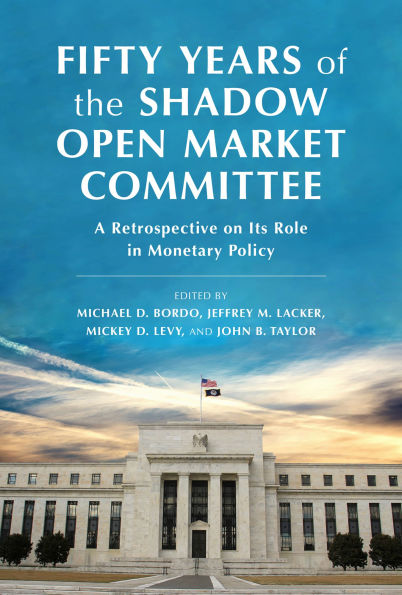Contributors discuss how the SOMC evolved in its approach to monetary policy—from a strong emphasis on controlling the money supply to rein in the high and variable inflation of the 1970s, to a broader focus on rules-based policies as the best strategy to avoid major policy mistakes and maintain a credible monetary policy. The SOMC has also critiqued the rising frequency of Fed interventions in credit markets, including its participation in rescuing failing banks. Readers will find thought-provoking analyses from leading monetary economists, including rigorous discussions about rules versus discretion and assessments of the Taylor rule, a key policymaking tool.
Chapters by leading economic and financial scholars address many of the pressing central bank policy issues of today, including the Fed’s evolving interpretation of its dual mandate (price stability and maximum employment), the expanded role of the Fed in financial markets and the effect on policymaking, the implications of its enlarged balance sheet, and fiscal-monetary policy interactions. An lively discussion among former leading Fed members on outside influences sheds light on factors that affected some of their crucial decisions.
In an environment where the Federal Reserve can significantly affect economic performance, the scholarly contributors to this book emphasize the importance of rules-based monetary policy focused on price stability as the Fed’s best contribution to healthy economic growth and maximum employment, and of credible and predictable credit market policy as supporting financial stability. For those committed to understanding the most important issues facing the Fed and the contributions of the SOMC to the monetary policy debate, this volume serves as an essential resource.
Contributors discuss how the SOMC evolved in its approach to monetary policy—from a strong emphasis on controlling the money supply to rein in the high and variable inflation of the 1970s, to a broader focus on rules-based policies as the best strategy to avoid major policy mistakes and maintain a credible monetary policy. The SOMC has also critiqued the rising frequency of Fed interventions in credit markets, including its participation in rescuing failing banks. Readers will find thought-provoking analyses from leading monetary economists, including rigorous discussions about rules versus discretion and assessments of the Taylor rule, a key policymaking tool.
Chapters by leading economic and financial scholars address many of the pressing central bank policy issues of today, including the Fed’s evolving interpretation of its dual mandate (price stability and maximum employment), the expanded role of the Fed in financial markets and the effect on policymaking, the implications of its enlarged balance sheet, and fiscal-monetary policy interactions. An lively discussion among former leading Fed members on outside influences sheds light on factors that affected some of their crucial decisions.
In an environment where the Federal Reserve can significantly affect economic performance, the scholarly contributors to this book emphasize the importance of rules-based monetary policy focused on price stability as the Fed’s best contribution to healthy economic growth and maximum employment, and of credible and predictable credit market policy as supporting financial stability. For those committed to understanding the most important issues facing the Fed and the contributions of the SOMC to the monetary policy debate, this volume serves as an essential resource.

Fifty Years of the Shadow Open Market Committee: A Retrospective on Its Role in Monetary Policy
616
Fifty Years of the Shadow Open Market Committee: A Retrospective on Its Role in Monetary Policy
616
Product Details
| ISBN-13: | 9780817926748 |
|---|---|
| Publisher: | Hoover Institution Press |
| Publication date: | 10/01/2025 |
| Pages: | 616 |
| Product dimensions: | 6.00(w) x 9.00(h) x (d) |
